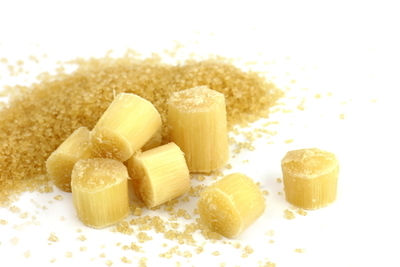Nigeria on August 5, 2025 began exploring sugar production self-sufficiency through a roadmap by the National Sugar Development Council (NSDC).
Addressing a delegation from the All Farmers Association of Nigeria (AFAN), the NSDC’s Executive Secretary Kamar Bakrin tabled several remedies to revamp output.
The first of these is to unlock production potential via private investments in 150,000 hectares (ha) of public land.
For a start, Bakrin welcomed commercial farmers to 50,000 ha that will accommodate 50-200 ha of cane farms, apiece.
This prime land is in strategic locations with mills such as Numan and Bacita in eastern and western Nigeria, respectively.
According to Bakrin, the aim of apportioning the arable land is “to bridge the production deficit with the commercial outgrower initiative.”
Similar production drives are not wanting for in April 2024, Kano state in northern Nigeria launched a degraded land restoration program covering 1 million hectares.
Excessive Imports
A side aim of the current test plan is to decrease imports into Nigeria’s big consumption-driven sugar industry.
According to Bakrin, the country’s sugar market is worth $2 billion or 1/3rd that of Africa’s equivalent industry at $7 billion.
By the 2024-25 season, the West African country had made progress by slashing sugar imports by an estimated 6%, year-on-year. That season, the national sugarcane output was to increase by 7%, to 80,000 tonnes, per the U.S. Department of Agriculture (USDA).
Conversely, the NSDC also aims to create a conducive domestic cane investment environment inclusive of 30% land infrastructure cost tax relief.
This encouragement could help reduce the gap between burgeoning consumption totals and production. For instance, consumption in 2023 was at 1,443,097 tonnes, while millers processed barely a drop of that. And as the below statistics guide, the sugar gap in Nigeria has been there for years, in spite of a master plan.
Nigeria Sugar Statistics
Nigeria is one of the biggest sugar-consuming nations by national volume, averaging 1.442 million tonnes per year, as of 2023. Against a sugar output of 30,053 tonnes (2023), Nigeria needs to import over 1.4 million tonnes of sugar per year to satiate demand. This huge appetite has created a behemoth industry worth $2 billion versus Africa’s combined $7 billion.
How has Nigeria’s sugar consumption performed annually?
According to the National Sugar Development Council (NSDC), annual consumption for the 1990 -2023 timeline peaked in 2021 at 1.6 million tonnes. The next table gives key consumption highlights in the 2019-23 period, courtesy the NSDC.
| Year | Consumption [tonnes] |
| 2023 | 1,442,097 |
| 2022 | 1,721,128 |
| 2021 | 1,603,831 |
| 2020 | 1,531,471 |
| 2019 | 1,401,891 |
How has Nigeria been tackling the sugar production-utilization gulf?
The Nigerian Sugar Master Plan of 2008 by the NSDC sought to mitigate rising utilization with uptick production. Its first proposal was setting up 28 sugar mills while the second was to boost cane acreage. Between 2008 and 2018, the corporation put 250,000 hectares of arable land under cane plantations. Despite the plan, imports continued to rise amid consumption verging on 1.1 million tonnes in 2011. That same year, sugar imports rose exponentially to 101.9 billion Naira ($66.5 million), from 73 billion Naira ($47.7 million) in 2010.
